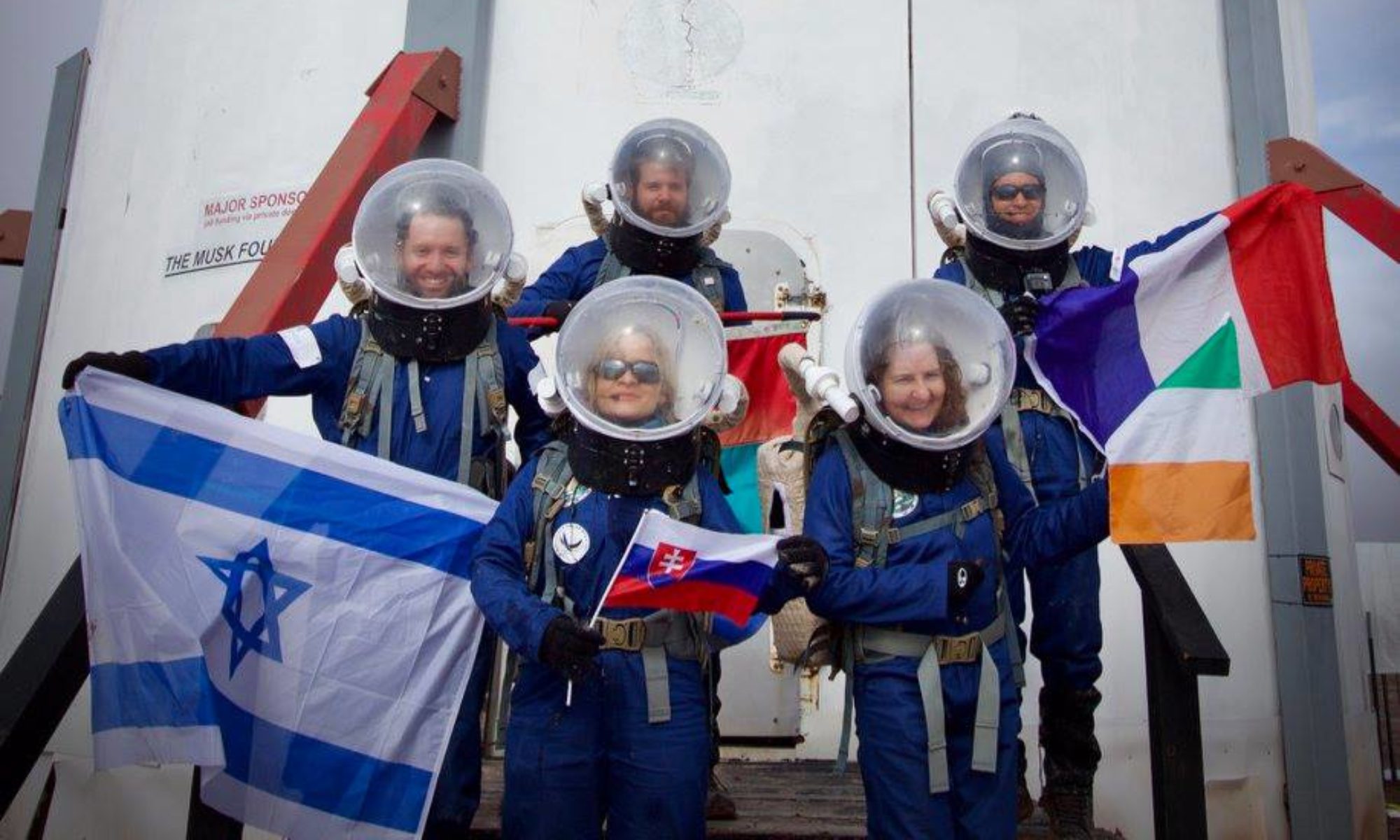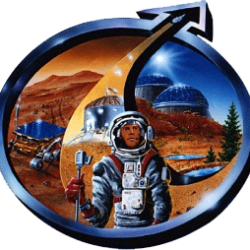The Hypatia II crew will be conducting several research projects in the field of: astronomy, engineering, geology, biology, sustainability and human factors.
Each crew member is leading a specific research project described below. The crew is also involved in several collaborative studies on human factors.
Crew Scientist: Estel Blay
Project Name: Solutions to Improve the Efficiency of Solar Cells on Mars
Mars presents unique challenges for solar cells due to the fine, electrostatically charged dust that adheres to surfaces, blocking the absorption of sunlight. This accumulation reduces their efficiency, and over time, the abrasive dust can scratch surfaces, further damaging their functionality. Frequent dust storms exacerbate these issues, making dust management crucial for long-duration missions. During the mission, various solutions will be evaluated to optimize the performance of solar cells, focusing on the development of innovative designs and the effectiveness of protective coatings in the harsh Martian environment.
Mission Specialist: Mònica Roca i Aparici
Project Name: Simulation of Satellite Calibration Using Trihedral Reflectors
Satellites orbiting Mars must be precisely positioned to measure terrain elevation. The radar altimeter, essential for this task, calculates the height of the surface beneath the satellite. This technology, already used on Earth to map oceans, glaciers, and the geoid, requires calibration to ensure accurate measurements. Advances such as the Fully Focused SAR (FF-SAR) method have improved spatial resolution to 1 meter, allowing the use of smaller passive reflectors (less than 2 meters). This ESA-funded project simulates the altimeter on Mars using a trihedral reflector at the MDRS.
Crew Artist: Anna Bach
Project Name: The Martian Explorers, a Children’s Book Based on the Hypatia II Mission
This children’s story narrates the space mission to Mars of the Hypatia II crew, introducing its brave members and the exciting projects they undertake, as well as the fun adventures they experience on the Red Planet. The book aims to inspire young girls to become fearless explorers and scientists, highlighting real women working in fields such as engineering, geology, astrophysics, and mathematics. At a crucial stage when studies show that girls start to doubt their place in science, this story provides female role models, nurturing their curiosity and showing that science is also for them.
Crew Astronomer: Ariadna Farrés
Project Name: Space Weather on Mars
Solar radiation affects both communication satellites and the human body. On Earth, the atmosphere and magnetic field provide protection, but on Mars, these effects are much stronger, making the use of space suits essential during extravehicular activities. At the MDRS, we will observe the Sun using a telescope to analyze sunspots and potential electromagnetic storms, comparing the data with observations from SoHO and other satellites.
Crew Geologist: Marina Martínez
Project Name: In-Situ Analysis in Sample Return Missions: Optimizing Space Exploration
This project aims to optimize a sample return mission using two instruments: an X-ray fluorescence gun and an ED-XRF spectrometer. These devices provide in-situ compositional data, essential for prioritizing quality over quantity in sample selection. The combination of both allows for precise analysis in the field and the scientific dome, ensuring an optimal selection process. This strategy offers adaptability through real-time adjustments, greater petrological variability in collected samples, and efficient resource use by reducing storage needs. Ultimately, it maximizes the scientific value of samples for future lunar or Martian missions.
Crew Journalist: Jennifer García Carrizo
Project Name: Hypatia’s Circular Odyssey: A Journey to Mars Through the Lens of Circular Economy
This project involves creating an interactive virtual tour showcasing the MDRS. Through videos, it highlights sustainable practices and circular economy strategies implemented during the mission at the station, inspiring similar actions on Earth. The project features collaborators such as Planeta Huerto, which provided a portable composter for organic waste management, and Sepiia, which supplied sustainable clothing that requires no ironing and repels odors and dirt. Additionally, the app The Good Goal will help the crew optimize sustainability throughout the mission.
Crew Engineer: Helena Arias
Project Name: Study of the Effect of Nutrition and Physical Preparation on Muscle Mass Loss in Crew Members
This project investigates muscle mass loss in the analog astronauts of Hypatia II during their mission at the MDRS. To mitigate this, the crew will follow specific nutrition and training protocols before and during the mission. Physiological parameters will be analyzed using smartwatches (Garmin) and biomarkers. Anthropometric measurements are conducted at CAR Sant Cugat, while biomarkers are analyzed by IS Global. Personalized dietary plans are supervised by a team of nutritionists from Hospital Sant Joan de Déu, and training protocols are validated by Fisioesportiva. The goal is to improve protocols applicable to future interplanetary space missions.
Project Name: Monitoring the female body under semi-extreme conditions
The female body and its reaction to extreme or semi-extreme conditions is not well understood. Studies on human factors have typically been based on the male body. There is a lack of information and data regarding women’s behaviour under certain extreme conditions that astronauts have to face in their missions, and more in particular during the space walks or extravehicular activities.
The MDRS is a perfect place to carry out this study and gather data from the Hypatia II crew 310, so that it can be analysed by Human Factor research centres such as the Barcelona Institute of Global Health (ISGlobal) .
This study will be carried out during the MDRS crew 310 mission (Hypatia II), where the crew members will be wearing instrumentations such as a Garmin watch (provided by Garmin, https://www.garmin.com/en-US/), that will measure vital constants like heart rate, blood pressure, body temperature, blood oxygen, etc., while performing the day to day activities and the extravehicular activities, preferably being submitted to semi-extreme conditions. The data will be analysed by a ISGlobal Research Centre team, led by Dr. Juan Ramon González, as PI.
Project Name: The female cyclicity as a tool for self-consciousness
The benefits of self-knowledge of the female cyclicity and how the hormonal cycle affects the physical body, behavior, emotional and mental states is powerful as it allows us to make better decisions and work more efficiently, being kind to our needs. While astronauts have usually been men in the past, and given that their bodies work differently, it is important for women to acknowledge and recognize repetition of sequences in behaviors each month. Self-awareness of the female cyclicity is crucial for decision making. The goal is to be conscious about whether we are in a good position for acting in extreme situations or situations that require high responsibility, recognize whether we are thinking with clarity or respond logically to specific situations, and/or work with others as a team, among others. This project proposes to do introspective work every day to find patterns among cycles (after a 3-month analysis) that will enable better outcomes during space missions and life in general.
In collaboration with AstroCup (a team of scientists and engineers whose main goal is to provide a choice of menstruating medical devices for space missions contributing to equal access to space). Women’s health in space is an understudied area of research. Many astronauts have had their menstruation hormonally suppressed during missions, which can last up to several months. In future longer missions (Moon and Mars colonisation), the lack of options for menstruation may increase inequality in access to space. In that regard, we will also test menstrual cups for astronauts to assess their use and evaluate different possibilities for cleaning, making their use zero residue.

